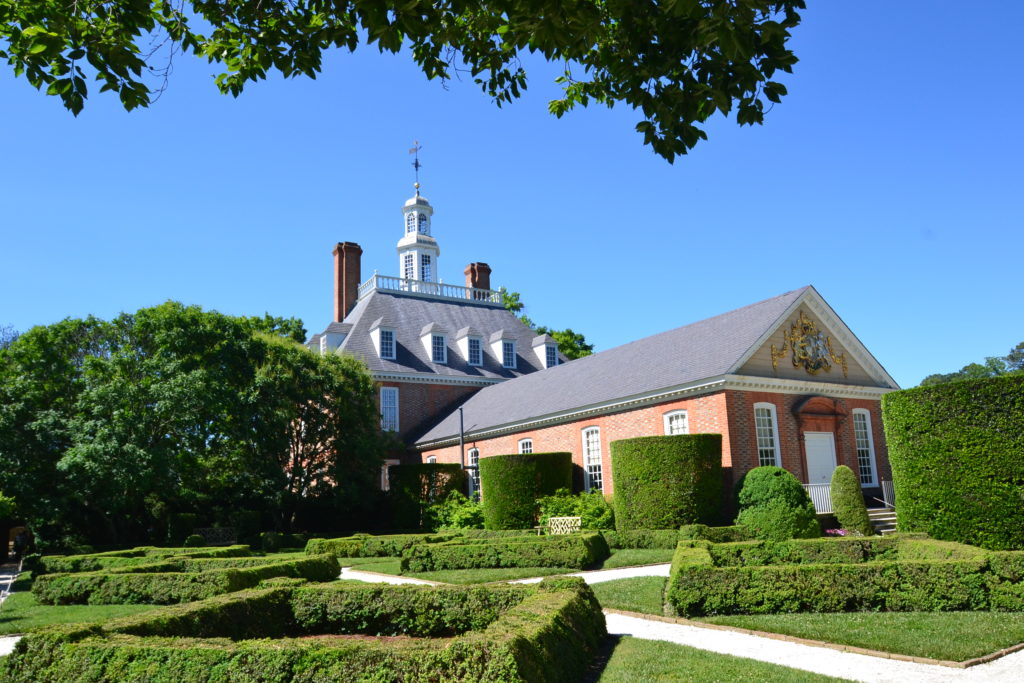What I remember most about Colonial Williamsburg was that it was crowded and a bit chaotic. Although we purchased our tickets ahead of time, we had to stand in a 20 minute line. We found parking at the visitor center, but it was getting full. After finally getting our tickets, we walked the trail to the historic area. Not everything is open all the time. For example, on that Saturday, only certain houses were open for tours. We stopped first at John Chowning’s Tavern where we had a delicious meal. While we were waiting, we went to the Magazine to see the old weapons.
Then, we went to the Peyton Randolf House. During the tour of the two-story dark red wooden home, we learned not only about the Randolf family, but about their slaves as well. Originally owned by Sir John Randolf, the property consisted of two separate houses that were later joined together.
Along the way, we walked into the Old Courthouse to hear how people were treated back in the day. Additionally, there was a military parade – complete with drum and fife.
We went inside R. Charlton’s Coffeehouse. From what I recall, only men were allowed inside and they would sit at one large table and discuss politics and read the newspapers. On this tour, the woman dressed up like chamber maid offered us cocoa.
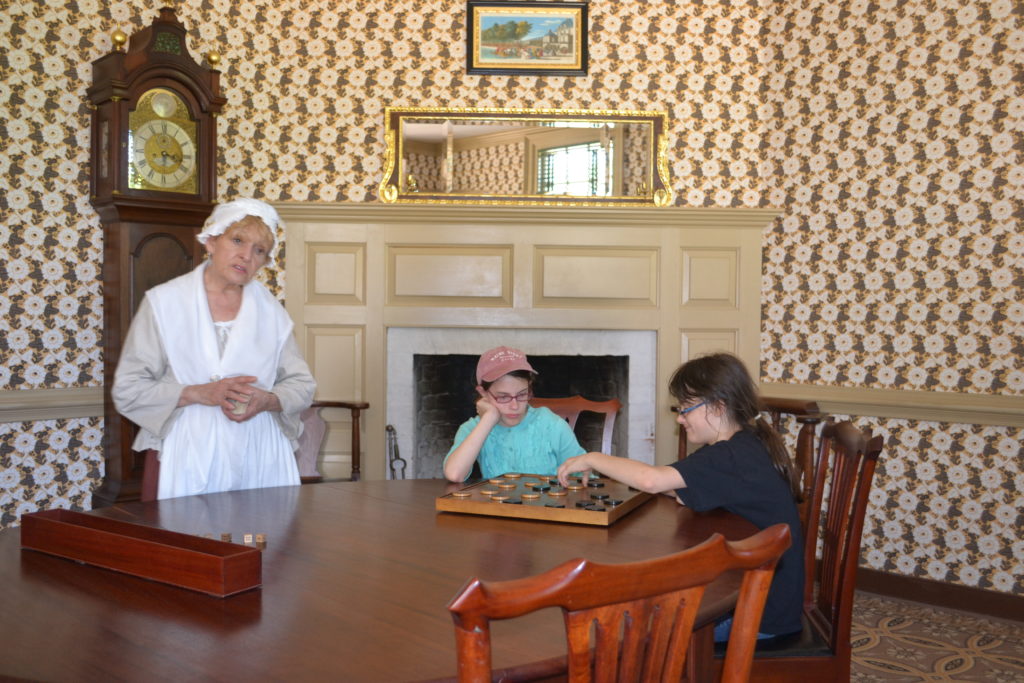
We then went to the Rockefeller House called Bassat Hall. Most fascinating was that our tour guide was completely blind. He’d been giving tours for 20 years and knew every step of the place that you wouldn’t even realize he had a vision problem. The John D. Rockefeller Jr’s visited the area as a guest of Dr. W.A.R. Bruton and decided to restore Williamsburg to its original town design. They bought Bassat Hall home, which had been built in the mid 1700s and lived here while renovations occurred during the 1930’s and 1940’s. With it’s almost 600 acres, the house is on the far edge of Colonial Williamsburg and somewhat set apart from the town. I remember we walked in the kitchen located in the back of the house where we saw a cookbook and old recipes. It seemed a humble house for such a wealthy couple.

Along the way, various demonstrations show what colonial life was like. We saw the workings of a printing shop, book bindary, millaner and shoe cobbler.
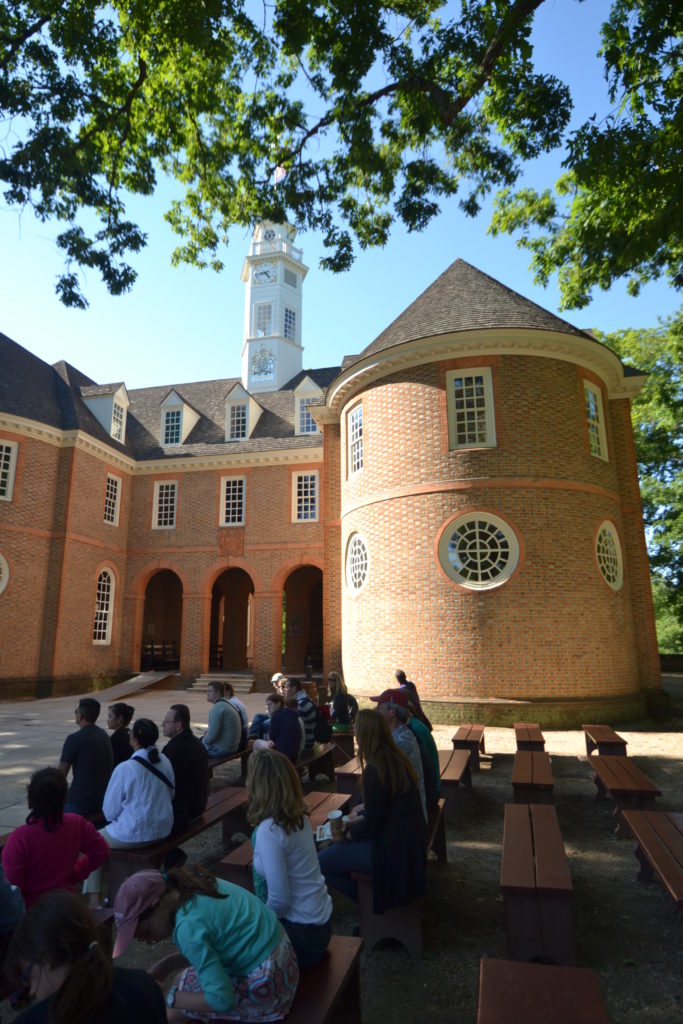
Later that day, we took a tour of the Capitol. We were in a large group of 30 people but got to see where the House of Burgesses met. One side was for the House of Burgesses and the other for the Council. A rectangular room connected the two wings. Upstairs, was a large room with tables for signing things. With it’s green tablecloths, it felt more like a Revolutionary blackjack hall.
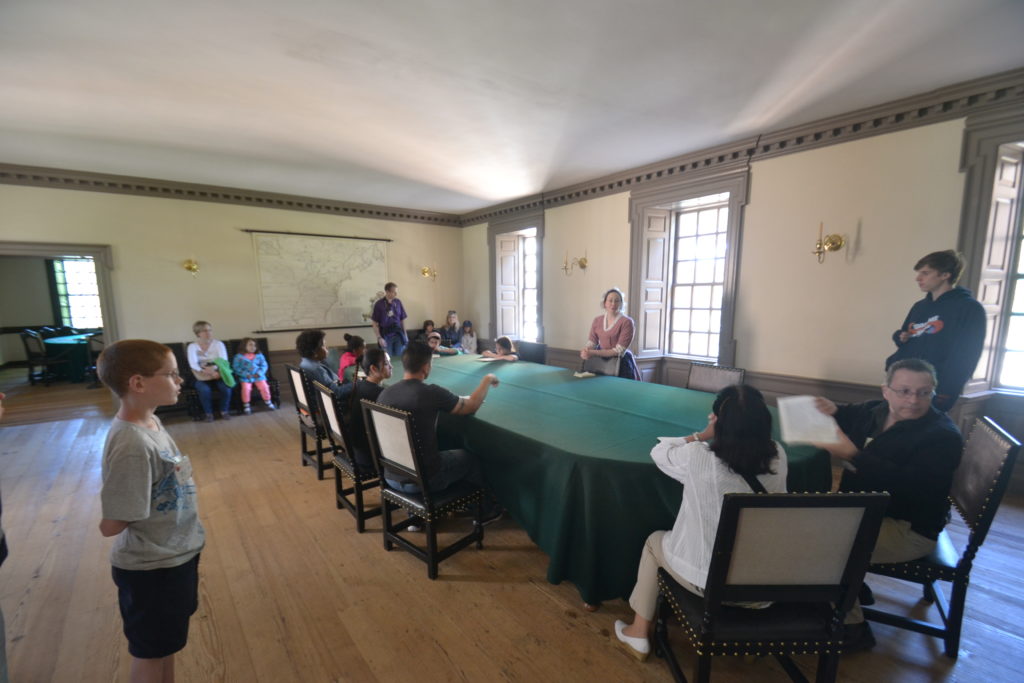
The next morning, we were more rested and toured the Governor’s Palace. Being a Sunday morning, there were fewer people and a more enjoyable experience. The front room was completely filled with armor. We learned how Governor John Murray, also called Lord Dunmore barricaded himself in the palace, before fleeing back to England after the Gunpowder Incident of 1775. At the back was a beautiful blue ballroom. Outside, the backyard boasted beautiful gardens.
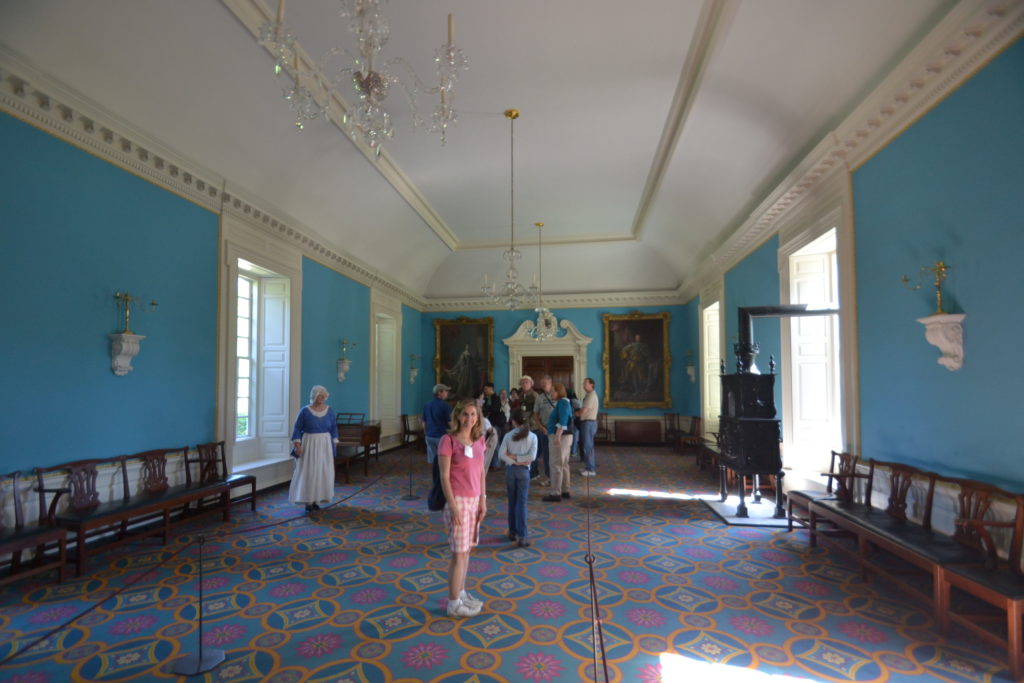
Overall, Williamsburg is a fun and educational place to visit. Be prepared for crowds and plan to spend more than one day so you can tour more buildings. Go online to study the map and plan out times of various tours.
For more information, visit here.
This was my review on TripAdvisor which explains the ticket situation in better detail.
You really need to buy the ticket to get the Colonial Williamsburg experience, but prepare for lots of walking and crowds. It was like Disney for History Buffs. We got to the Visitor’s Center around noon on Saturday of Memorial Day Weekend. We had purchased tickets ahead of time online, but had to stand in a “pick up tickets” line for about 20 minutes. Although there were several computer kiosks to print out tickets, they had run out of the plastic clips to wear your tickets (required) so we had to stand in line anyway. There appeared to be 10 ticket stations, but only 3 attendants on duty. I felt they could have been better prepared for Memorial Day tourists.
What makes the visit confusing and chaotic is that not every place is open every day of the week so you have to make a strategic plan of what to see. For example, the Randolph House was closed on Sundays, the Joiner was closed on Fridays and Saturdays, but the Thomas Everand House was closed on Saturdays and Sundays. Some sites like the James Geddy House and the Printing shop were open every day, but only until 1pm, while others like the Bindery didn’t open until 1pm. On top of all of that, there are special events for the day such as the Fife and Drum march and participation in a courthouse trial. It should also be noted that most of the houses, the Capitol and the Governor’s Palace are all about 25 minute tours (included in admission). However, for most of the trade shops, you can just walk into it (with a ticket) and watch a demonstration.
The next morning was a much better experience as we got there at 9am before most of the crowds. By then, we knew what to expect and planned accordingly. The tour guides are extremely knowledgable and friendly. It is truly a living history museum. Our favorite places were the Governor’s Palace, Charlton’s Coffee House (a historic tour, not a place to buy coffee), and the Gunsmith shop.
Overall, I recommend this, but be prepared – buy tickets online, research their website for opening/closings of each site, have a game plan, and stay at least 2 days.

